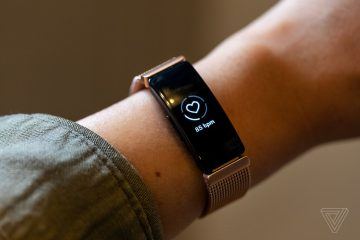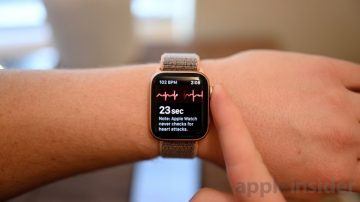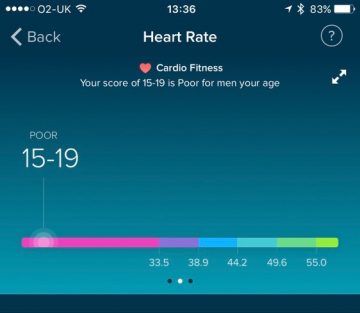by Carol Westbrook

If all the data from the 70 million Fitbits and other wearables in the U.S. were analyzed for clusters of flu-like symptoms, we might have known about the coronavirus epidemic, traced the contacts and perhaps slow its spread, even before widespread testing was available. This is the power of wearable health technology.
Did you know your Fitbit could do that?
What sparked my interest in Fitbit health trackers was the recent news that Google acquired Fitbit, Inc., for $2.1 billion! I thought that wearables were old news, just another fad in consumer electronics that has already passed its time. What value did Google see in wearables?
Wearables are devices used to improve fitness and overall health by promoting and increasing activity. These small electronic devices are worn as wristbands or watches that detect and analyze some of the body’s physical parameters such as heart rate, motion, and GPS location; some can measure temperature and oxygen level, or even generate an electrocardiogram. What is unique about wearables is that they transmit this data to the wearer’s cell phone, and via the cell phone to the company’s secure database in the cloud. For example, the owner inputs height, weight, gender and age, and algorithms provide realtime distance and speed of a run, calories expended, heart rate, or even duration and quality of sleep. Fitness goals are set by the wearer or by default. The activities are tracked, and the program will send messages to the wearer about whether their goals were achieved, and and prompts to surpass these goals. Fitness achievements can be shared with friends of your choice–or with Fitbits’ related partners, even without your express consent.
Wearables were embraced by health-conscious Americans as a way to keep fit, by always pushing you to try a little harder. My favorite example was pundit David Sedaris, one of the early adopters, who wrote in the New Yorker in 2014,
“This year, I got a Fitbit. You walk 10,000 steps and it sends you an email saying, ‘That’s great! A lot of people don’t walk that far. Do you think you can walk 5,000 more steps?’ And so I say, ‘I bet I can!’ A week ago, I walked 60,000 steps. That’s 25.5 miles. I’m completely obsessed. It’s like a sickness; I’ve been Fitbit-ten. It will be the summer of the Fitbit because it can’t go on. It just can’t,”
When they were first introduced, Fitbit fever spread through the country. Companies gave them to employees; medical insurance offered discounts to wearers. Other wearable producers stepped into the craze, and when the Apple Watch was introduced a year after Fitbit, it included built-in wearable health technology. Fitbit is still by far the most popular wearable. 
Not everyone is as obsessed with their wearable as Sedaris, but many do take them seriously–at least initially. Studies have shown a positive health benefit from wearables, but within 6 months their use declines,unless there is strong motivation, such as health care discounts. On the other hand, when health trackers are used for a specific health purpose, such as for weight loss, cardiac rehab, or sleep modification, use may continue longer. For example, Fitbit has developed a “Cardio Fitness” scale based on resting heart rate, age, sex, weight, and other data. And newer versions of Apple Watch have a cardiogram feature that can detect abnormal rhythms. 
Still, for most wearers, Fitbits eventually become “nagwear” and the annoying, motivating features are turned off. (For myself, I’ve turn off my Apple watch motivations, though I check my daily step count out of curiosity.) Many people now wear them out of habit, using them as watches or to message friends. Wearing a Fitbit demonstrates to the world that they are active and fit; in a sense, these bracelets become amulets to keep them well.
And therein lies the value of wearable–even if the wearer does not use their fitness features, they keep passively collecting data and sending it to the cloud.
What can be done with this data? One example comes from Kinsa, maker of a smart thermometer, using anonymized data from over one million of their cell-phone connected thermometer. The “US Health Weathermap” is a visualization of seasonal illness linked to fever; it accurately depicted the growth and spread of the coronavirus epidemic, as well as its decline. 
But Google did not purchase Fitbit out of altruistic motives to help track epidemics, or to motivate Americans to improve their health. What Google purchased was the realtime health tracker database of over 28 million people worldwide. If this database could also be linked to the wearer’s medical information, it would be invaluable. And that is just what Google is doing by partnering with Ascension, the nation’s second-largest health system, which collects the clinical data on millions of patients in 21 states and across 2,600 hospitals and clinics. This combination of real-time health data linked to medical information is invaluable.
Google’s partnership with Ascension is code-named Project Nightingale. By moving its clinical data onto Google’s’ cloud platform, Ascension hopes to create tools for physicians to access patient data more rapidly. Google plans to design software that uses artificial intelligence and machine learning to make suggestions for patient treatment plans, and to develop a platform that can be sold to other health care providers. Because it is a partner of Ascension, Google is permitted access to the identified health care data under HIPAA (Health Insurance portability and Accountability Act), if its access is used “only to help the covered entity carry out its healthcare functions.” Developing a health platform for Ascension that can suggest individualized treatment plans, tests, and procedures meets these criteria. It may be legal, but allowing Google access to personal health information is frightening.
Imagine getting an automated call from a robo-nurse,
“Good morning Mr. Smith. I see your pulse rate is very high in spite of the fact that you are at rest and you do not have a fever. I see you have a history of heart disease. I am concerned you may be having a heart attack. Please turn on the blood pressure and cardiogram functions of your Fitbit. Would you like me to call you an ambulance? Thank you and have a good day.”
“Mrs. Jones you have been in GPS contact with three people who now test positive for the coronavirus. Your temperature is normal now, but please come in for a Covid-19 test. Thank you and have a good day.”
“Mr. Devine, your Fitbit Cardio Fitness Score (CFS) of 15-19 is too low. If you do not improve your CFS to at least 25 over the next two months we will have to increase your insurance costs. Please see your doctor for your health program and weight loss plan. Would you like me to make an appointment for you?”
“Ms. Collins I see you have had close or sexual contact with Mr. Williams three times last week. This is notification that he has a sexually transmitted infection, and you may have contracted it. You must see your gynecologist for testing as soon as possible. Would you like me to make an appointment for you?”
“Mr. Walter, your chart shows two heart attacks and your blood pressure is very high. We will have to raise your insurance rates. Thank you and have a good day.”
“Mr. Stevens, I see that you have stopped wearing your Fitbit. Please put it back on or you will lose your health care coverage.”
Is this the future of health care?
